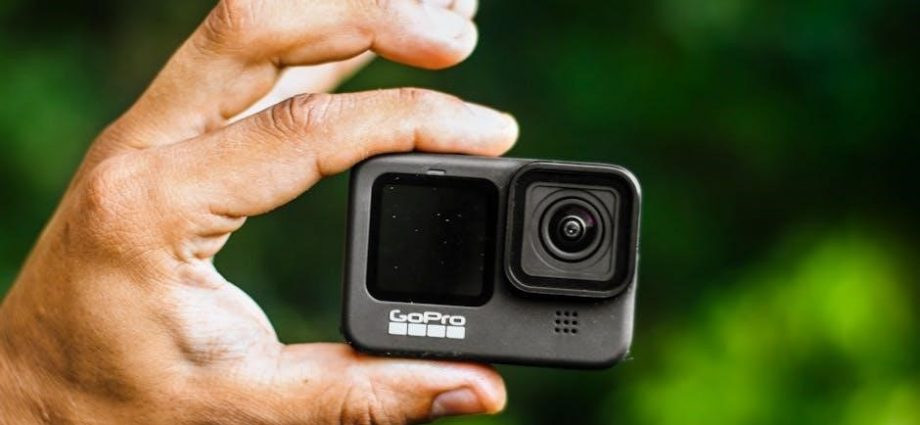Welcome to the LUX Thermostat User Manual, your guide to understanding and operating your LUX thermostat. This manual provides essential information for optimal use and troubleshooting.
1.1 Overview of the LUX Thermostat
The LUX thermostat is a reliable and user-friendly device designed to provide precise temperature control for your home. It offers a range of models, from non-programmable options like the DMH110 to advanced smart thermostats such as the TX9000TS series. These thermostats are compatible with various heating systems, including gas, oil, and electric setups. The LUX thermostat is known for its simplicity, with an intuitive interface that allows for easy adjustments. Whether you prefer basic temperature management or smart home integration, LUX thermostats cater to different needs, ensuring energy efficiency and comfort. Popular models include the DMH110, TX100E, and TX500E, each offering unique features to enhance your heating and cooling experience.
1.2 Importance of Reading the Manual
Reading the LUX thermostat user manual is essential for optimal performance and safety. It provides step-by-step installation guides, operation instructions, and troubleshooting tips. Proper understanding ensures correct setup, avoiding potential issues. The manual also explains advanced features and energy-saving settings, helping you maximize efficiency. Familiarizing yourself with the content prevents installation errors and ensures your thermostat functions as intended. Additionally, it serves as a reference for resolving common problems, reducing the need for professional assistance. By following the manual, you can fully utilize your thermostat’s capabilities, enjoy energy savings, and maintain a comfortable home environment. Take the time to read and understand the manual before installation and operation.

1.3 Table of Contents
This manual is organized into clear sections to help you navigate easily. It begins with an introduction, followed by installation, operation, advanced features, maintenance, troubleshooting, and resources. Each section contains detailed sub-sections addressing specific topics. The table of contents outlines the structure, allowing quick access to information. Main sections include:
- Installation Guide
- Operating the LUX Thermostat
- Advanced Features
- Maintenance and Care
- Troubleshooting
- Conclusion
- Resources
Refer to this table of contents to locate specific guidance efficiently, ensuring you make the most of your thermostat’s capabilities.

Installation Guide
This section provides a step-by-step guide for installing your LUX thermostat, including compatibility checks, required tools, and wiring instructions. Ensure power is off before starting.
2.1 Compatibility Check
Before installing your LUX thermostat, ensure it is compatible with your HVAC system. Most LUX models work with single-stage 24-volt systems, including gas, oil, or electric heating. Verify your system type and voltage to avoid installation issues. Check the thermostat’s specifications for compatibility with your heating and cooling setup. For example, the LUX DMH110 is non-programmable and suitable for basic systems, while the TX9000TS supports advanced features. Refer to the manual or manufacturer’s website for detailed compatibility charts. Ensuring proper compatibility guarantees optimal performance and prevents potential damage to your HVAC system. Always consult a professional if unsure about your system’s requirements.
2.2 Tools and Materials Needed
To install your LUX thermostat, gather the necessary tools and materials. You will need a screwdriver (both Phillips and flathead), wire strippers, a voltage tester, and a drill with bits. Additionally, ensure you have mounting screws, wall anchors, and any other hardware provided with your thermostat. For some models, like the TX9000TS, you may also need a level to ensure proper mounting. Refer to your specific model’s manual for any additional requirements. Having all tools and materials ready will streamline the installation process. Always turn off the power to your HVAC system before starting work to ensure safety. If unsure, consult a qualified technician for assistance.
2.3 Step-by-Step Installation Instructions
Begin by turning off the power to your HVAC system at the circuit breaker. Remove the old thermostat and label the wires for identification. Install the new thermostat base, ensuring it is level and securely mounted. Connect the wires to the appropriate terminals, matching the labels from your old thermostat. Mount the new thermostat faceplate, ensuring it is aligned properly. Turn the power back on and test the system to ensure it operates correctly. Refer to the wiring diagram in your manual for specific connections. If unsure, consult a qualified technician to avoid any issues. Follow these steps carefully to ensure a successful installation.
2.4 Wiring Diagrams and Connections
Refer to the wiring diagram in your LUX thermostat manual for specific connections. Identify and label the wires from your old thermostat before disconnecting them. Common wire labels include R (24V power), W (heat), Y (cool), G (fan), and C (common). Connect the wires to the corresponding terminals on your new LUX thermostat, ensuring secure and correct placement. Double-check the wiring diagram to match your system type, such as 24V, heat pump, or dual-fuel. If your system requires a common wire (C), ensure it is connected to avoid power issues. Consult a professional if you are unsure about the wiring configuration to prevent damage or safety hazards.
2.5 Mounting the Thermostat
Mounting your LUX thermostat securely ensures proper operation. Begin by leveling the thermostat base on the wall to avoid uneven installation. Use the provided screws or adhesive strip to attach the base firmly to the wall. Ensure the base is snug and aligned with the wiring connections. Gently attach the thermostat face to the base, making sure it clicks securely into place. Avoid touching the screen during installation to prevent smudging. If your thermostat requires batteries, insert them as directed before mounting. Once mounted, test the thermostat by turning the system on and off to ensure it responds correctly. Proper mounting ensures accurate temperature sensing and smooth operation.

Operating the LUX Thermostat
Operating your LUX thermostat is straightforward. Use the touchscreen interface to adjust temperature, set schedules, and access energy-saving features. The intuitive design ensures easy navigation and control.
3.1 Basic Operations and Controls
Mastering basic operations of your LUX thermostat is simple. The touchscreen interface allows easy temperature adjustments, mode selection (Heat/Cool/Off), and schedule setup. Use the navigation buttons to increase or decrease settings. The display clearly shows current temperature, setpoint, and system status. Familiarize yourself with icons indicating heating, cooling, or fan operation. For scheduling, toggle between daily periods and set preferences. The home screen provides quick access to essential functions, while the menu offers advanced settings. Always refer to the manual for specific button functions and troubleshooting tips to ensure optimal performance and energy efficiency. This section ensures smooth daily operation of your LUX thermostat.
3.2 Setting Temperature and Schedules
Setting the temperature and schedules on your LUX thermostat is straightforward. Use the touchscreen or buttons to adjust the desired temperature. For scheduling, navigate to the menu and select “Schedule” to set daily temperature preferences. Choose from pre-set options or customize your own. The TX9000TS model allows for 7-day scheduling, while the DMH110 offers basic temperature adjustments. Ensure energy efficiency by setting lower temperatures when away or sleeping. Use the “Hold” feature to override schedules temporarily. Refer to your model’s specific instructions for advanced scheduling options. Properly setting schedules and temperatures optimizes comfort and energy savings, making your LUX thermostat a reliable home climate manager.

3.3 Energy-Saving Features
Your LUX thermostat offers advanced energy-saving features to reduce consumption and lower utility bills. Models like the TX9000TS include smart learning technology, which adapts to your schedule and preferences. Geofencing automatically adjusts temperatures based on your location. Energy-saving modes optimize heating and cooling usage when you’re away or sleeping. Some models, such as the DMH110, provide basic yet effective temperature controls to prevent unnecessary energy use. Use the “Eco” setting for balanced comfort and efficiency. Regularly updating your schedule and utilizing these features ensures maximum energy savings without compromising comfort. Refer to your specific model’s guide for detailed instructions on activating and customizing these energy-efficient options.

3.4 Troubleshooting Common Issues
If your LUX thermostat isn’t functioning properly, start by checking the display for error codes. Common issues include blank screens, incorrect temperatures, or unresponsive controls. Ensure the thermostat is properly powered and wires are securely connected. For models like the TX9000TS, reset the device by removing batteries or switching off power for 30 seconds. If the issue persists, consult the error code list in your manual. For the DMH110, ensure the temperature settings are correctly configured. If problems remain unresolved, refer to the troubleshooting section in your specific model’s guide or contact LUX support for assistance. Regular software updates can also resolve many issues.
Advanced Features
Explore advanced features like smart home integration, remote access, and customizable settings to enhance functionality and convenience, optimizing comfort and energy efficiency effortlessly.
4.1 Smart Home Integration

The LUX thermostat seamlessly integrates with popular smart home systems, enhancing convenience and control. Compatible with platforms like Apple HomeKit and Amazon Alexa, it allows voice command functionality and remote monitoring. Users can adjust settings, receive alerts, and optimize energy use through integrated apps. This feature enables smart scheduling and energy-saving modes, adapting to your lifestyle. By connecting to your smart home network, the thermostat learns your preferences, ensuring optimal comfort and efficiency. Integration also allows coordination with other smart devices, creating a unified home automation experience. This advanced capability modernizes temperature control, making it easier to manage your environment effortlessly from anywhere.
4.2 Remote Access and Control
The LUX thermostat offers remote access and control through its dedicated smartphone app, allowing users to adjust settings, monitor temperatures, and receive notifications from anywhere. This feature ensures convenience and energy efficiency, as you can modify schedules or adjust temperatures even when you’re not home. The app provides real-time updates, enabling you to optimize your heating and cooling systems for maximum comfort and cost savings. Remote control is particularly useful for adjusting settings before arriving home or addressing unexpected changes in temperature. Ensure your thermostat is connected to a stable internet network for uninterrupted remote functionality. This feature enhances the overall user experience, making it easier to manage your home’s climate efficiently.

4.3 Customizing Settings
The LUX thermostat allows users to customize settings to suit their preferences and lifestyle. Through the thermostat’s interface or smartphone app, you can adjust temperature ranges, create custom schedules, and enable energy-saving modes. Customization options include setting preferred temperatures for different times of the day, adjusting the thermostat’s sensitivity, and personalizing the display settings. Advanced features like geofencing can also be enabled to automatically adjust temperatures based on your location. These customization options ensure that your heating and cooling system operates efficiently while maintaining your desired level of comfort. Regularly reviewing and updating your settings can help optimize energy usage and performance. This feature-rich system is designed to adapt to your unique needs, providing a tailored experience for your home’s climate control.

Maintenance and Care
Regular maintenance ensures optimal performance. Clean the thermostat screen gently, check for software updates, and reset if necessary. Consult a professional for complex issues to avoid damage.
5.1 Cleaning the Thermostat
Cleaning your LUX thermostat is essential for maintaining its performance and longevity. Use a soft, dry cloth to gently wipe the screen and exterior surfaces. Avoid harsh chemicals or abrasive materials, as they may damage the display or housing. For stubborn marks, lightly dampen the cloth with water, but ensure no moisture seeps into the device. Never spray liquids directly on the thermostat. Regular cleaning prevents dust buildup, which can interfere with temperature sensing. Clean the thermostat every few months or as needed. Proper maintenance ensures accurate temperature control and extends the product’s lifespan. Always power down the device before cleaning for safety.
5.2 Software Updates
Regular software updates are crucial for maintaining your LUX thermostat’s performance and security. Check for updates through the thermostat’s menu or via the LUX app. Ensure your device is connected to Wi-Fi to receive notifications about new updates. To update, follow the on-screen instructions carefully. If using a USB drive, download the latest firmware from the official LUX website and transfer it to the device. Always power down the thermostat before performing updates. Updates may improve functionality, add features, or fix bugs. Refer to the manual for detailed steps or contact LUX support if issues arise. Keeping your thermostat updated ensures optimal performance and compatibility.
Troubleshooting
Troubleshooting your LUX thermostat? Identify common issues like connectivity problems or temperature inaccuracies. Check wiring connections, ensure proper setup, and consult the manual for solutions. Contact LUX support if issues persist.
6.1 Common Error Codes
The LUX thermostat may display error codes to indicate specific issues. Common codes include E1, E2, and E3, which relate to temperature differences, sensor malfunctions, or system errors. E1 typically signifies a large discrepancy between setpoint and actual temperature, while E2 may indicate a faulty temperature sensor. E3 could point to a system malfunction or communication error. Refer to the manual for a detailed list of codes and their meanings. To resolve these issues, check wiring connections, ensure proper sensor function, and restart the thermostat. If errors persist, consult the troubleshooting section or contact LUX support for assistance. Regular maintenance can help prevent these issues.
6.2 Resetting the Thermostat
Resetting your LUX thermostat can resolve various issues. To reset, press and hold the “Menu” and “Back” buttons simultaneously for 5-10 seconds until the display resets. For models with a touch screen, navigate to the settings menu, select “Reset,” and confirm. Some models may require removing the battery or switching off power at the circuit breaker. After resetting, the thermostat will revert to factory settings, so you may need to reconfigure your preferences. Resetting is useful for resolving software glitches or starting fresh with custom settings. Ensure you have backed up your settings before performing a reset. If issues persist, refer to the troubleshooting guide or contact LUX support.
6.3 When to Call a Professional
If you encounter issues beyond basic troubleshooting, it may be necessary to consult a professional. This includes complex wiring problems, system incompatibility, or advanced feature configurations. If error codes persist after resetting or if the thermostat malfunctions despite proper setup, professional assistance is recommended. Additionally, if you are unsure about installation steps or lack the required technical expertise, a qualified HVAC technician or electrician should be contacted. They can ensure safe and correct installation, preventing potential damage to your system. Always prioritize safety and efficiency by seeking expert help when needed. Refer to the troubleshooting guide or contact LUX support for further guidance before calling a professional.

Conclusion
Thank you for reading the LUX Thermostat User Manual. Proper use and maintenance will ensure optimal performance and energy efficiency. Refer to support resources for further assistance.
7.1 Final Tips for Optimal Use
To maximize your LUX thermostat’s performance, ensure proper installation and regular maintenance. Clean the device periodically to avoid dust buildup. Always update the software for the latest features. Use energy-saving modes and schedules to reduce consumption. Refer to the manual for troubleshooting common issues. For complex problems, consult a professional. Explore smart home integration for enhanced control. Familiarize yourself with the thermostat’s settings to customize your experience. Keep the user manual handy for quick reference. By following these tips, you’ll enjoy efficient temperature management and extend the lifespan of your LUX thermostat. Happy heating and cooling!
Resources
For further assistance, visit the official LUX support website or contact their customer service. Refer to the FAQ section and warranty information for additional guidance and support options.
8.1 Official LUX Support Contact
For any inquiries or assistance, contact LUX support directly. Visit their official website for contact details, including phone numbers, email, and live chat options. Support is available Monday through Friday, 8 AM to 6 PM EST. Their team is ready to help with troubleshooting, installation questions, or general product information. You can also find a comprehensive list of resources and downloadable manuals on their site. For urgent issues, calling their customer service hotline is recommended. Ensure to have your thermostat model number ready for faster assistance. LUX support is committed to providing timely and effective solutions to enhance your user experience. Visit their website today for all your thermostat needs.
8.2 Frequently Asked Questions
The FAQ section addresses common questions about your LUX thermostat, ensuring optimal performance and troubleshooting. Find answers to queries like compatibility, resetting, and scheduling. These questions are answered in the manual to help you resolve issues quickly. For example, “How do I reset my thermostat?” or “Why is my thermostat not responding?” are covered. Tips for maintaining your device, such as cleaning the screen for accurate readings, are also included. If you encounter error codes, refer to the troubleshooting section for solutions. This section is designed to provide clear, concise information to enhance your user experience. Visit the FAQ page for detailed guidance and support.
8.3 Warranty Information
Your LUX thermostat is backed by a comprehensive warranty program, ensuring protection against manufacturing defects. The warranty period varies by model, typically ranging from 1 to 5 years. Covered components include the thermostat unit and electronic parts. Damage due to misuse, improper installation, or external factors is not covered. For specific warranty terms, refer to the official LUX support contact. Register your product to validate the warranty and access exclusive support services. Visit the LUX website for detailed warranty conditions and to download the warranty certificate. This section ensures your investment is protected, providing peace of mind and reliable service.
